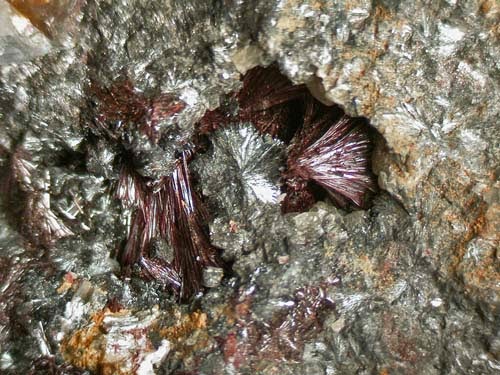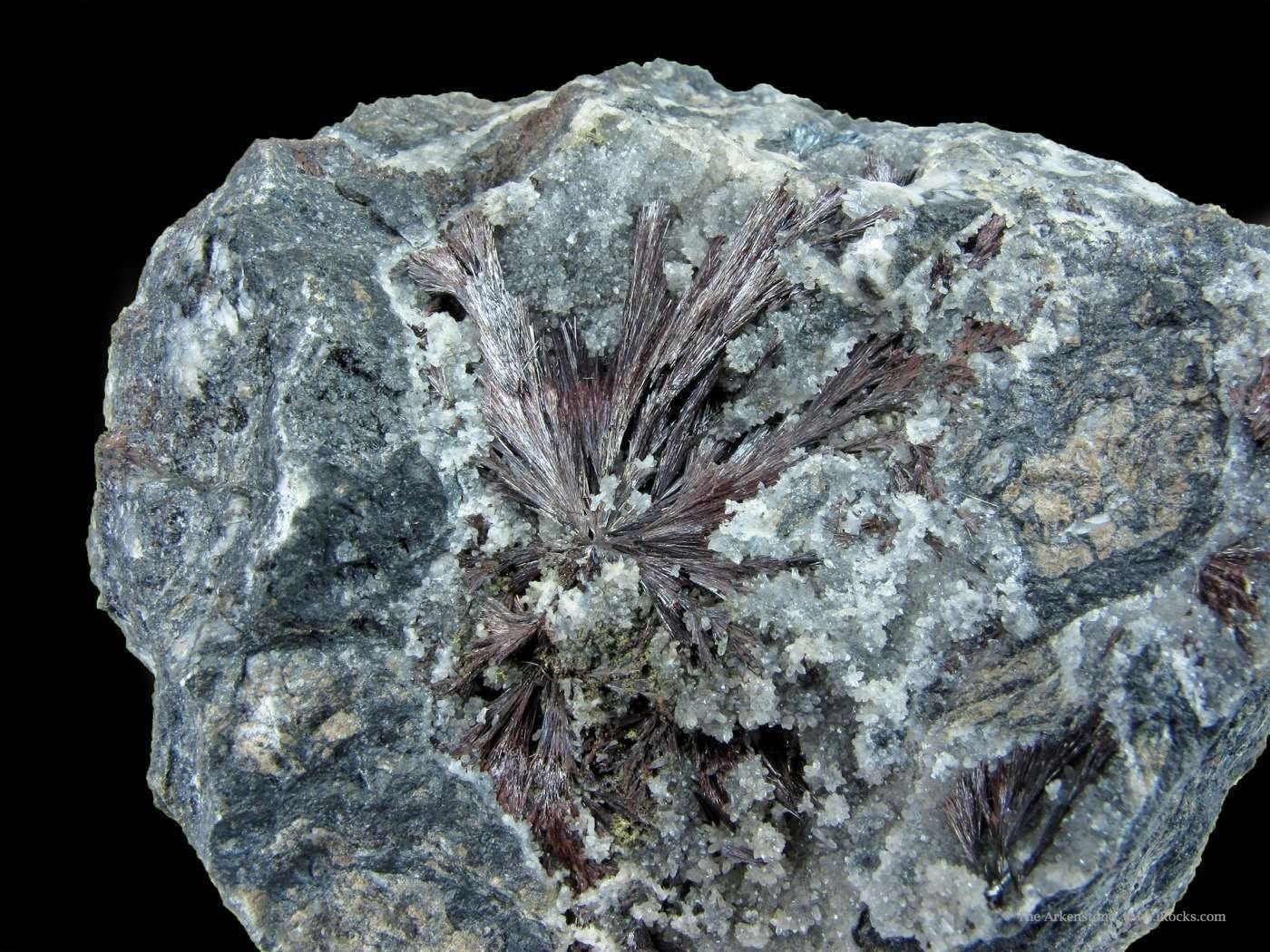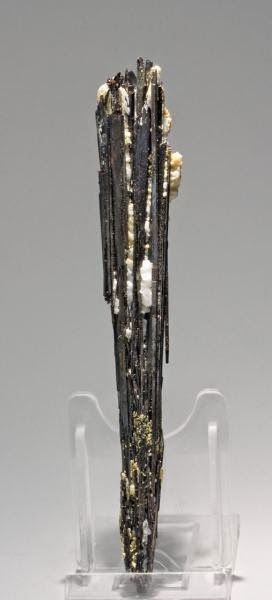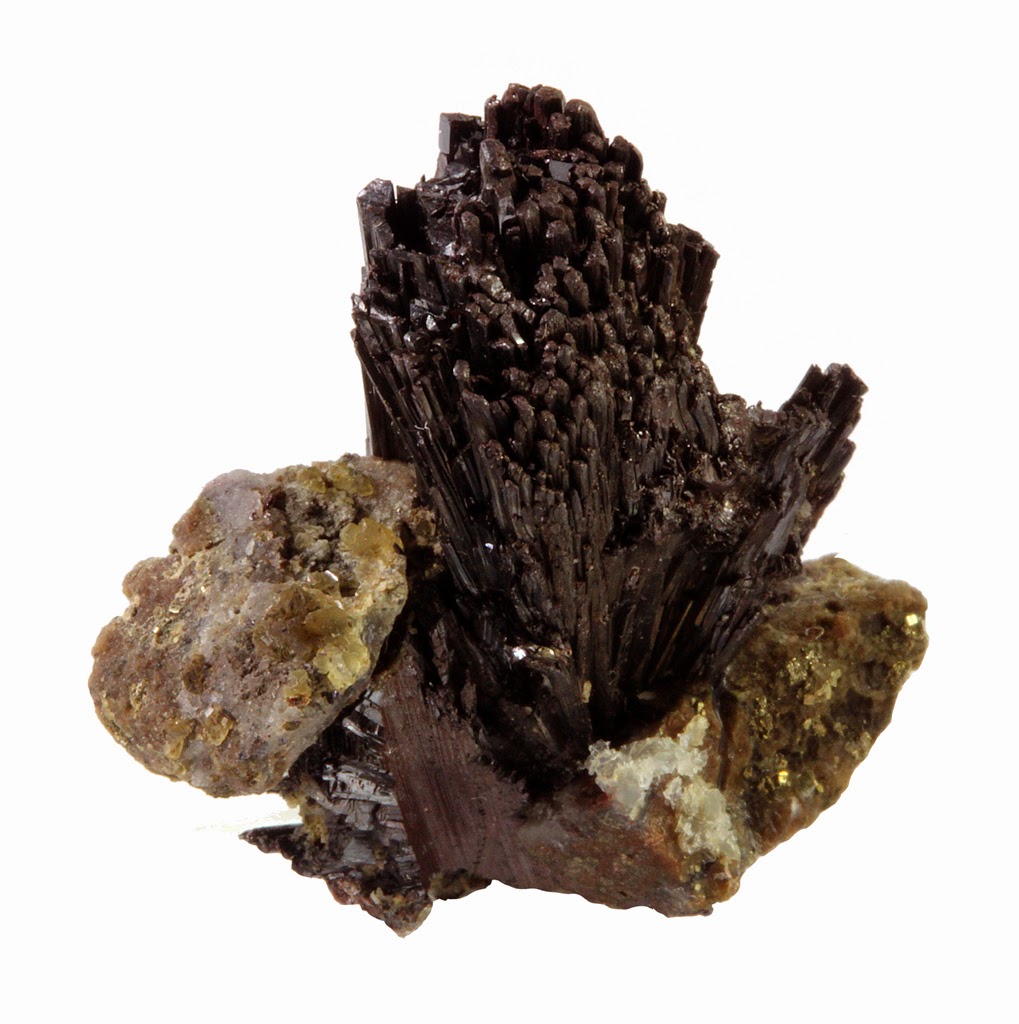 Chemical Formula: Sb2S2O
Chemical Formula: Sb2S2OLocality: Braunsdorf, near Freiberg, Saxony, Germany.
Name Origin: Name from kermes, a name given from the Persian qurmizq, “crimson” in the older chemistry to red amorphous antimony trisulphide, often mixed with antimony trioxide.Kermesite or antimony oxysulfide is also known as red antimony (Sb2S2O) . The mineral’s color ranges from cherry red to a dark red to a black. Kermesite is the result of partial oxidation between stibnite (Sb2S3)) and other antimony oxides such as valentinite (Sb2O3) or stibiconite (Sb3O6(OH)). Under certain conditions with oxygenated fluids the transformation of all sulfur to oxygen would occur but kermesite occurs when that transformation is halted.
Physical Properties
Cleavage: {100} Perfect
Color: Violet red, Cherry red, Red.
Density: 4.5 – 4.6, Average = 4.55
Diaphaneity: Translucent to Opaque
Fracture: Brittle – Generally displayed by glasses and most non-metallic minerals.
Hardness: 1.5-2 – Talc-Gypsum
Luminescence: Non-fluorescent.
Luster: Adamantine
Magnetism: Nonmagnetic
Streak: brownish red
Photos:













